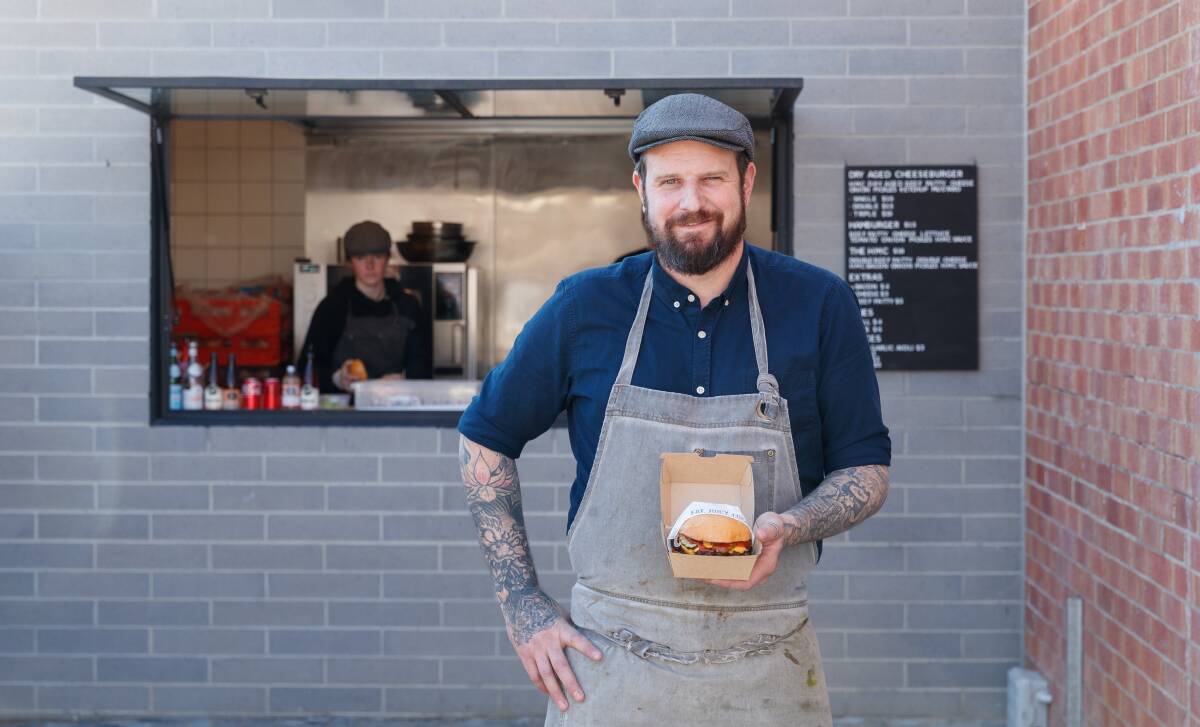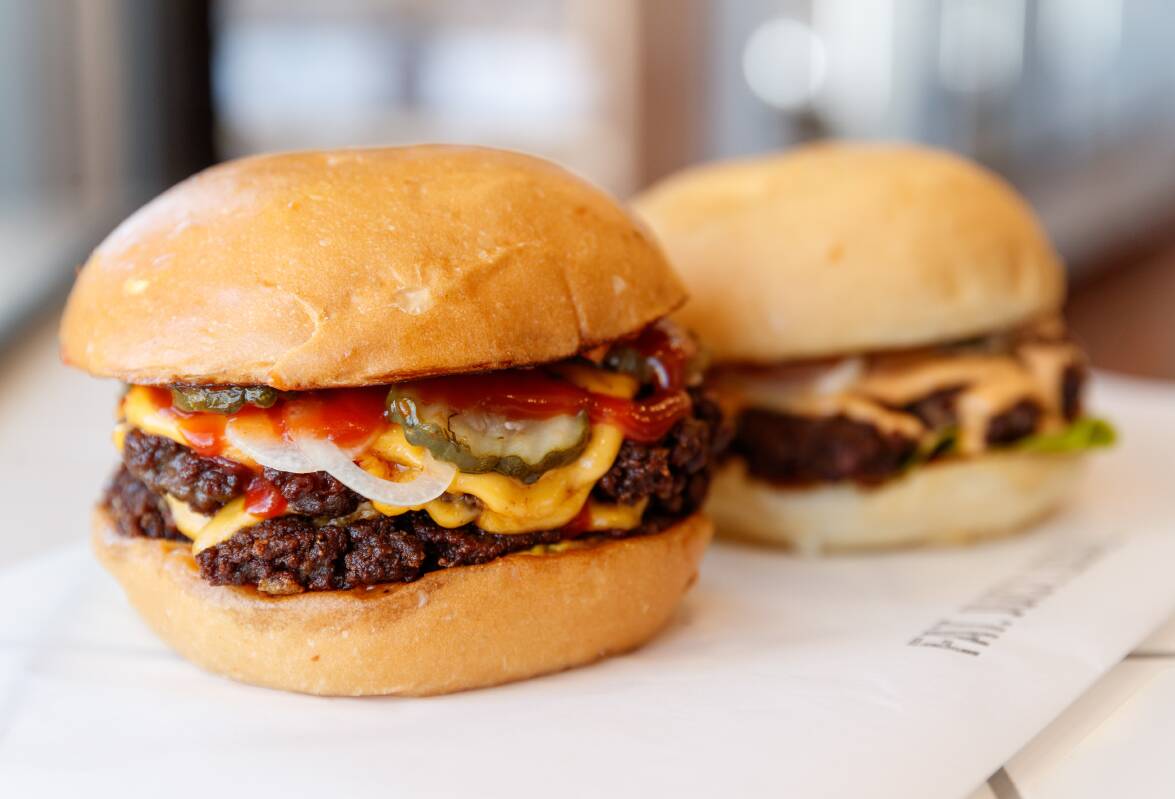
Fat. Juicy. Local.
That's the mission statement of Burgers by HMC, the new hole-in-the-wall takeaway alongside Hungerford Meat Co butchery in Branxton.
It may only be a service window off to the side, but the lip-smacking burgers are already a big hit with locals.
But let's start with the butchery, which blows the average butchery out of the water.
Former gun chef turned butcher Michael Robinson relaunched the specialty butchery recently after a big expansion, which included a new charcuterie section, more prep space and cool rooms to house his ever-expanding produce.
"We focus on the old-school style of butchery, using the whole animal as much as possible and dry-ageing the meat for around 40-60 days and that takes space," Rowland explains.
"We hang a lot of meat as we don't just supply the local community but also sell wholesale to eateries in the Hunter and several Sydney restaurants as well, including Porcine, Portena, Shell House and Hubert," Robinson says.
"That means each week I'm ordering a pallet of meat for my wholesale clients, so that's about a tonne, plus four to five whole pigs, eight to 10 lambs and two meat bodies."
It's a carnivore's nirvana.
Whether you fancy a 45-day, dry-aged, grass-fed rib eye chop at $99 a kilo, a grain-fed wagyu t-bone at $199 a kilo or a top-end, pure-bred wagyu scotch fillet at $299 a kilo, you can get it here.
But it's not all expensive cuts. There's also a counter filled with favourites like lamb cutlets, Angus beef burgers and a variety of flavoured sausages with the wagyu, truffle and parmesan snags catching our eye.
Robinson likes to buy direct from the farmer and as local as possible, but quality is his focus.
"We're still buying from Gundooee Organic Wagyu, Melanda Park Free-Range Pork, Little Hill Farm pasture-raised poultry and the Gourmet Goat Lady but we're now buying lamb direct from a farmer as well.

"Finding a lamb farmer in the Hunter Valley is difficult - it's not lamb country - but last month I found a farmer from the Central West - Naparoo grass-fed lamb - and he's now selling us whole lambs. That really was the missing piece in the puzzle."
He uses the whole animals in a range of fresh cuts as well as his expanding smoked meat range and charcuterie, which are all made on site.
"Last year we put 15 of our charcuterie products into Sydney Royal and we won 14 medals," he mentions proudly.
But back to the burgers.
"It was always part of the long-term plan to open a burger shop and I wanted to specialise in a dry-aged beef burger," he says.
According to Robinson dry-ageing breaks down the enzymes in the meat, which increases the tenderness and concentrates the flavour.
"I just use meat, fat and salt in my burgers," he says, "but the dry-ageing is the secret ingredient. It gives the burgers a distinct flavour. We age the meat for the burgers a minimum of three weeks and that enhances the taste."
He's serving three styles of American-style burgers, all using hand-formed patties of grass-fed, dry-aged Manning Valley chuck and brisket.
"I like to take a traditional approach to our burgers. A classic American cheeseburger must have mustard, tomato sauce, pickles and cheese. We use McLures American-style pickle with Real Dairy American cheese slices."
Apart from the signature cheeseburger, there's The HMC, a double beef, double cheese and bacon burger and a hamburger with tomato and lettuce.
Lettuce? Yikes, with lettuce commanding sky-high prices does that mean the burgs will also see a price rise?
"Thankfully we've only got one burger with lettuce," Robinson laughs, "so I think we're alright."
This isn't the first time he's flipped a burger or two.
"When I worked at Sydney's Becasse with Justin North, he had a cafe on the side called Plan B. When I was handling the meat section I had to cook 150 burgers for the cafe at lunchtime while cooking 80 covers for the restaurant at the same time."
"We also did a pop-up at the local markets here in Branxton for six months selling breakfast burgers and they sold out each week."
Clearly the locals love his burgers as he's now going through a whopping 300 kilos of patty mix a week.
So what's next?
"I plan to add hot dogs to the menu and maybe, at some stage, a steak sanger. But, at the moment, I'm concentrating on consolidating the expanded butchery and burgers.
"Down the track, though, I'd like to add a small wine bar and Argentinian-style grill overlooking the paddocks out back. The landlord owns the land and I'd like to raise our own pigs and sheep for that real paddock to plate experience."
You couldn't get more local than that.







